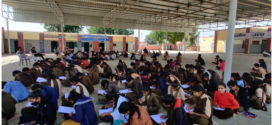Layoffs hurt employees’ morale and productivity, damage the company’s reputation, and make it hard to find and retain the best talent in the market. Every company should avoid layoffs for long-term success.
Unfortunately, the current economic slowdown is a heavy blow for many companies due to demand fluctuations in the past few quarters. As consumer demand recedes, many organizations would have to keep shedding their weight until they attain the optimum people cost. However, businesses wouldn’t need more than a few months to complete their restructuring. Hence, it’s safe to assume that this trend should end soon.
As business leaders, our responsibility is to prevent such scenarios from reappearing in the future. While governance, planning, and forecasting will be the main tools for this job, HR technology will help in efficient execution by leveraging predictive analytics and productivity management.
Forecasting
HR technology has tremendous potential when it comes to forecasting. AI-enabled HR tech products can predict future hiring needs based on data from various sources, like historical hiring patterns, current headcount, attrition rates, and projected business growth. This data can be used to identify trends and patterns that indicate when additional staff will be needed as per required shifts, locations, and skills.
Advance HR technology platforms use machine learning algorithms to predict future hiring needs based on the same data. Such platforms can also utilize data on job requirements and skills to identify potential candidates and predict when they will be available to hire.
Accurate forecasting is necessary to prevent overhiring.
Productivity
Weak control over organizational productivity also leads to layoffs during slow demand. Organizations tend to let go of less productive employees and try to improve the productivity of the rest of the workforce. Such situations don’t arise in organizations that are efficient in continuously tracking, measuring, and optimizing employee productivity.
SaaS-based and mobile-first, real-time productivity measurement products help companies assign and track progress continuously. It ensures the throughput is never lost. If the output falls below the expected rate, managers get notified to take corrective measures before it’s too late.
A continuous performance management process eliminates the chances of prolonged unproductivity and its after-effects, like layoffs.
Skill Management
Skill management is another reliable method to maintain productivity in the organization. Employees perform better when they are skilled and regularly upskilled in their jobs. The skill requirements of an employee also change from time to time. Therefore, continuous skill-gap analysis is essential.
New-age skill management platforms can understand the soft, technical, behavioral and cognitive skills required for a particular job with the help of AI-enabled assessment algorithms and vast skill repositories.
On the other hand, they can map the candidate’s skills during the entire journey starting from the pre-onboarding stage. Skill-gap analysis helps formulate a customized learning calendar for the hired candidate.
Summing it up
HR technology can play a mission-critical role to prevent layoffs in the future. But, organizations need to know how to leverage it optimally. Understanding the workforce requirement accurately and maintaining continuous productivity would go a long way towards healthy growth.
The article is attributed to Sumit Sabharwal, CEO of TeamLease HRtech
 Newspatrolling.com News cum Content Syndication Portal Online
Newspatrolling.com News cum Content Syndication Portal Online







